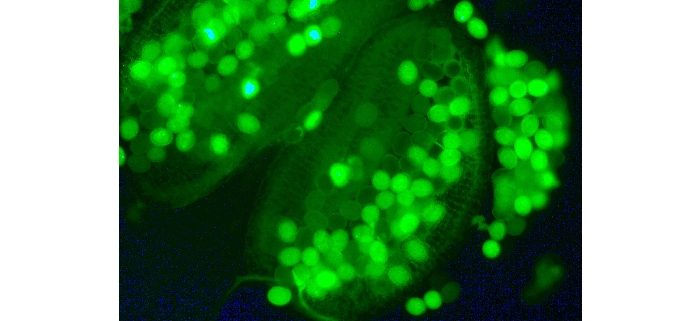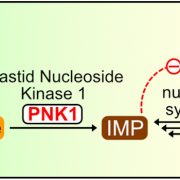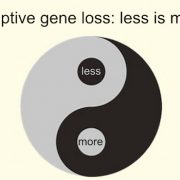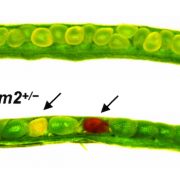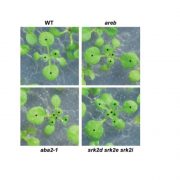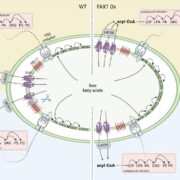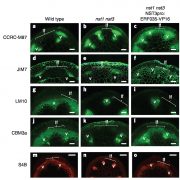Lipid kinases in signaling and metabolism
Angkawijaya et al. investigate diacylglycerol kinase function in Arabidopsis phospholipid signaling and metabolism. The Plant Cell (2020) https://doi.org/10.1105/tpc.20.00251
By Artik Elisa Angkawijaya, Van C. Nguyen, Farrel Gunawan, and Yuki Nakamura, Institute of Plant and Microbial Biology, Academia Sinica, Taipei,
Background: Phospholipids are indispensable constituents of biological membranes. In addition, some phospholipids can also serve as signaling molecules to regulate plant development and stress responses. Diacylglycerol kinase (DGK) is an important enzyme that converts diacylglycerol (DAG) into phosphatidic acid (PA). PA is a phospholipid signal that itself acts as a precursor in the biosynthesis of several phospholipid classes. Arabidopsis possesses 7 DGK genes, but whether each gene was associated with a specific role remained unclear until now.
Question: We wished to determine which DGK(s) were crucial for plant function and how they affected PA production for signaling and metabolism. We accomplished our goals by identifying a pair of critical DGKs whose double loss of function caused strong phenotypes, both during vegetative but also during reproductive development.
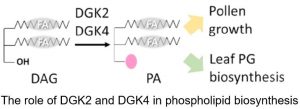 Findings: We discovered that DGK2 and DGK4, which are highly expressed in pollen, encode a critical DGK pair. We failed to identify a single double mutant in a segregating population derived from a cross between two (presumed null) T-DNA insertion alleles. Based on segregation behavior of parental alleles in targeted crosses, we hypothesize that the absence of double mutant seed is caused by defective pollen tube growth due to the lack of PA. To our surprise, the generation of plants that combined RNA silencing against one DGK in the insertion mutant background of the other DGK in the pair circumvented gametophytic lethality during pollen germination, presumably because RNA silencing did not completely remove all DGK2/4 mRNAs. These phenotypically weaker plants also displayed a lipid profile defect in their leaves, despite having no clear requirement for a PA signal.
Findings: We discovered that DGK2 and DGK4, which are highly expressed in pollen, encode a critical DGK pair. We failed to identify a single double mutant in a segregating population derived from a cross between two (presumed null) T-DNA insertion alleles. Based on segregation behavior of parental alleles in targeted crosses, we hypothesize that the absence of double mutant seed is caused by defective pollen tube growth due to the lack of PA. To our surprise, the generation of plants that combined RNA silencing against one DGK in the insertion mutant background of the other DGK in the pair circumvented gametophytic lethality during pollen germination, presumably because RNA silencing did not completely remove all DGK2/4 mRNAs. These phenotypically weaker plants also displayed a lipid profile defect in their leaves, despite having no clear requirement for a PA signal.
In fact, these DGKs generate PA to synthesize phosphatidylglycerol (PG), another class of phospholipid, via a previously unknown metabolic pathway. Thus, the DGK pair plays tissue-specific roles in phospholipid signaling and metabolism
Next steps: We are working to uncover how DGKs differentiate PA production for its own signaling function and membrane phospholipid metabolism in different tissues. Such an effort will update our current model of lipid metabolism and contribute to the understanding of the molecular mechanisms underlying reproductive viability for agricultural improvement.
Fei Angkawijaya et al. (2020). A pair of Arabidopsis diacylglycerol kinases essential for gametogenesis and ER phospholipid metabolism in leaves and flowers. Plant Cell DOI: https://doi.org/10.1105/tpc.20.00251


